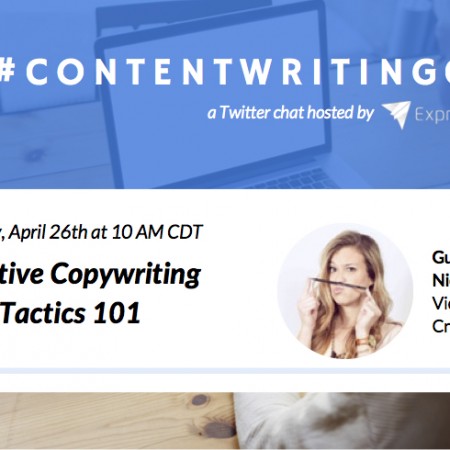
If you missed this week’s #ContentWritingChat, no need to worry! We’ve rounded up some of the tweets from...

If you missed this week’s #ContentWritingChat, no need to worry! We’ve rounded up some of the tweets from...

Did you miss #ContentWritingChat this week? There’s no need to worry, my friend! I’ve rounded-up some of the...

Did you miss this week’s #ContentWritingChat? Well, there’s no need to worry because you can catch up with...

If you missed #ContentWritingChat this week, then you missed an amazing conversation all about online video creation and...

Did you miss #ContentWritingChat this week? Never fear! We have a full recap of Tuesday’s chat where we...

Did you miss #ContentWritingChat this week? Or maybe you just wanted to check out some of the highlights...

Did you miss this week’s #ContentWritingChat? Well, you’re in luck because we have a full recap! We talked...

Did you miss this week’s #ContentWritingChat? If so, there’s no need to worry because we have you covered...

We had so many new participants in this week’s Content Writing Chat – we couldn’t have been more thrilled with...

Did you miss #ContentWritingChat this week? You’re in the right spot, because I’ve put together a recap of...
No HR needed to get access to the best writers, editors, QAs, and strategists. We are your all-in-one content writing service delivering publish-ready content.
Copyright – 2025 Express Writers -All rights reserved